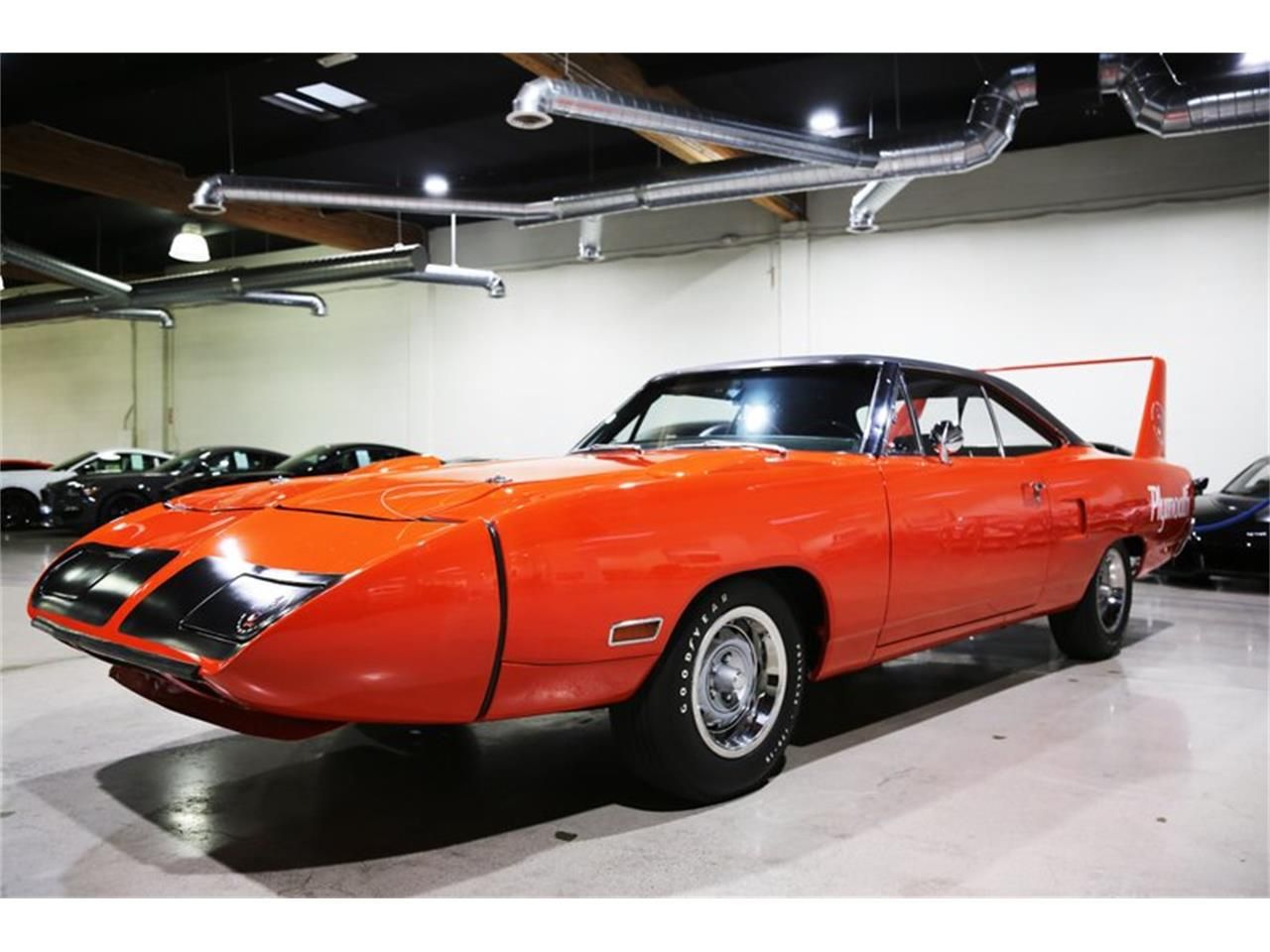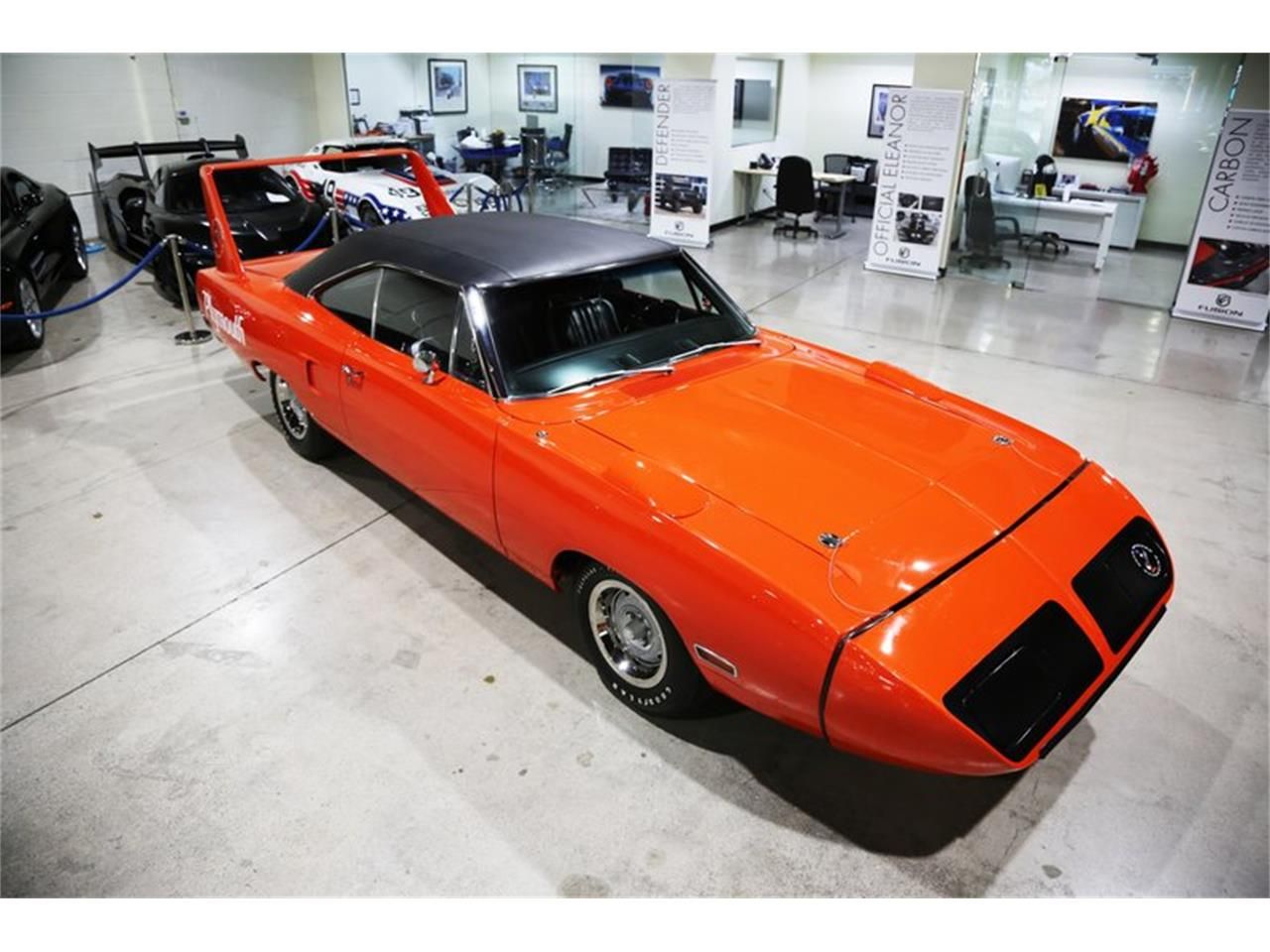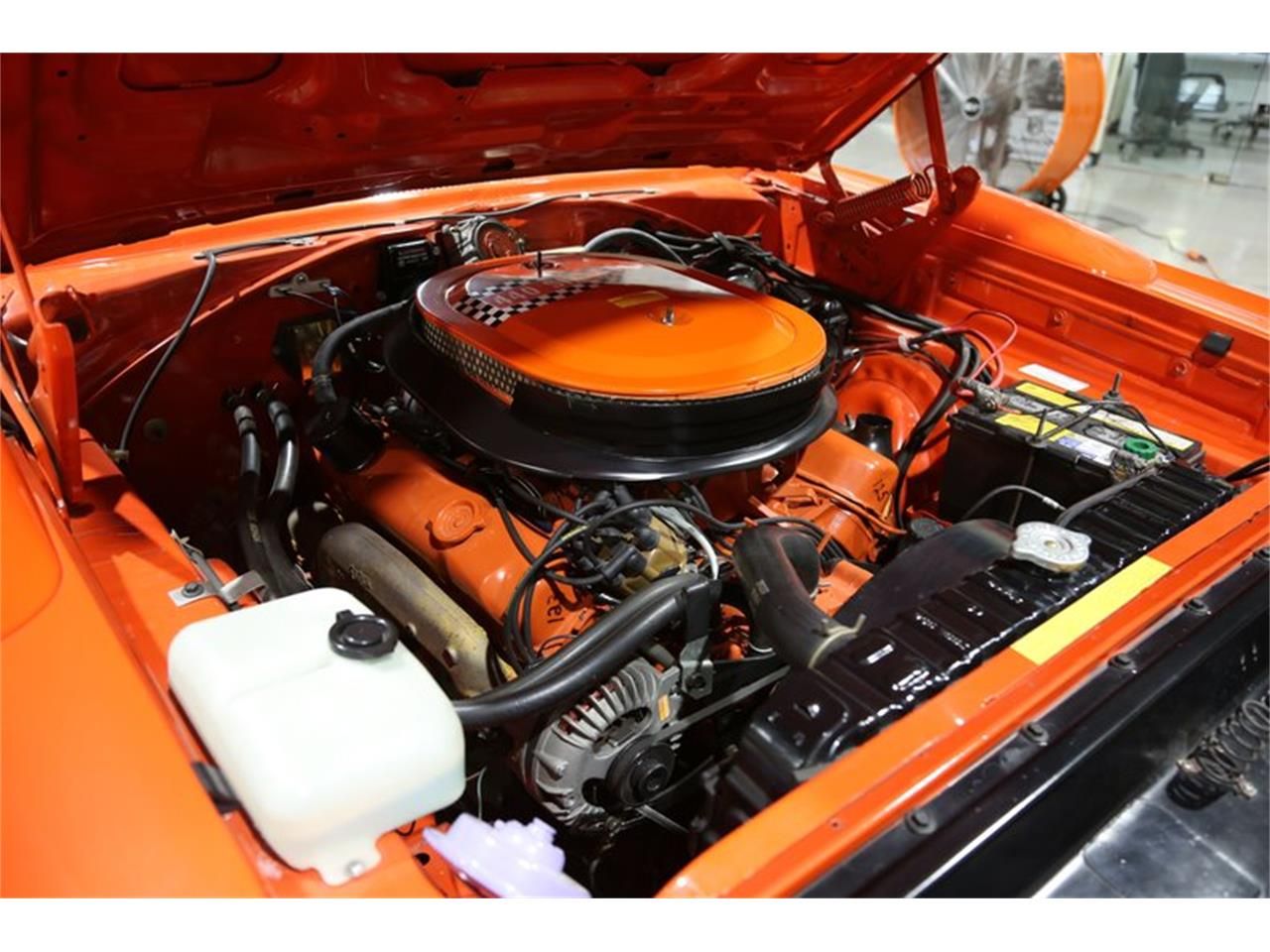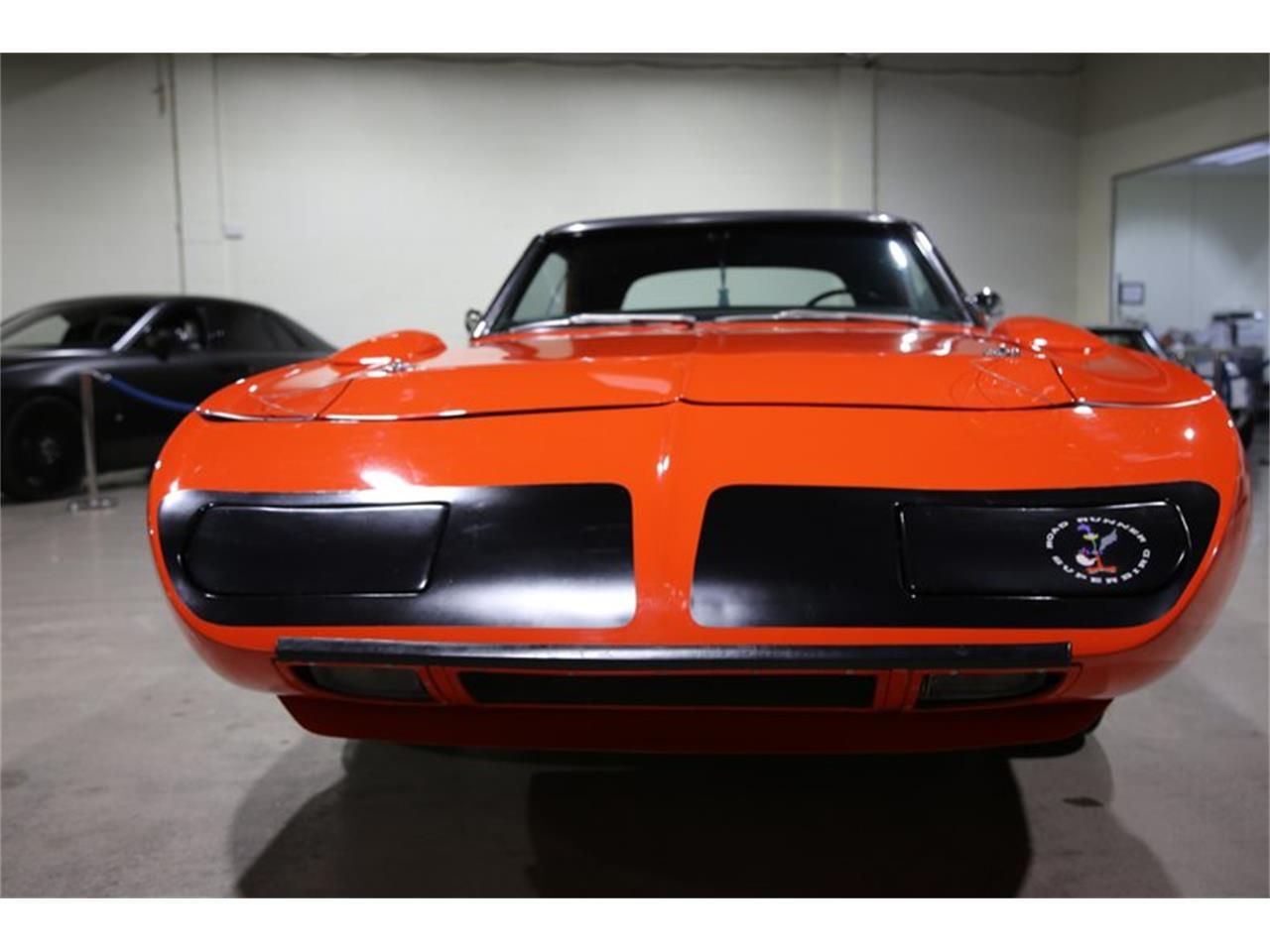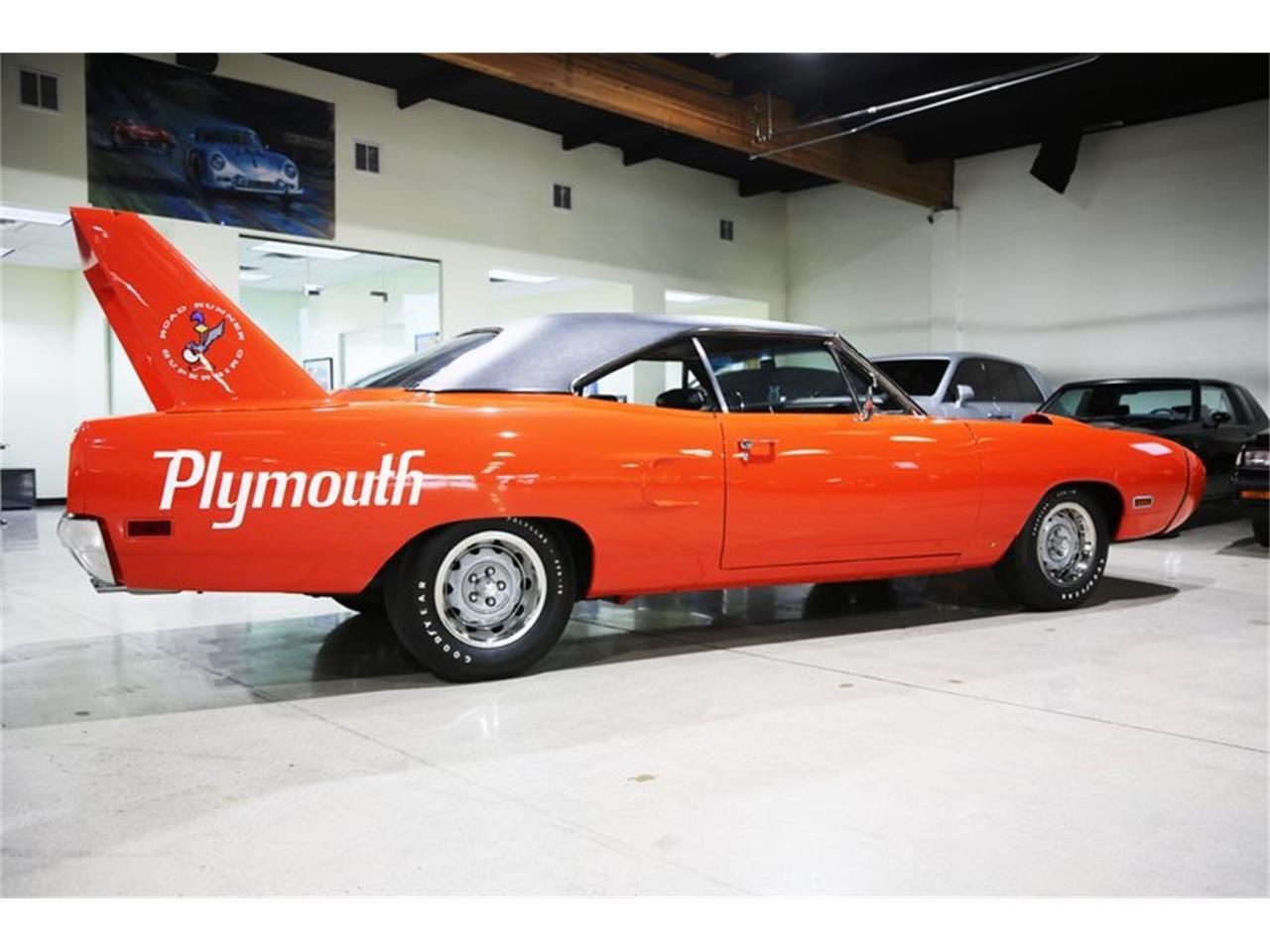The classic car market is at an all-time height and some truly amazing vehicles come up for sale. It seems time is still being kind to the 1960s and 1970s Muscle cars, and this 1970, EV2 Hemi orange Plymouth Superbird is the perfect example as it is, to this day, one of the most sought-after Muscle cars, and harkens back to classic NASCAR racers.
Back in the 1960s, NASCAR was filled with race cars, based on passenger cars. With this in mind, the Plymouth Superbird is, technically, a homologation for the racing version, and was as close as possible to the actual race cars. The winged muscle car perfectly embodies the “win on Sunday, sell on Monday” mentality.
This particular example is finished in EV2 Hemi orange, also known as TorRed, which is a color that sparked much debate. The truth is, it’s both orange and red, depending on the lighting, as described in a detailed guide on the high-impact Chrysler colors, by Dodge garage. In any case, this 1970 Superbird is one of just 260 examples, finished in the iconic, high-impact color.
It’s also one of just 716 examples, equipped with the 440 CID (7.2-liter) Six-pack V-8 engine, officially rated at 390 horsepower and 480 pound-feet (651 Nm), with the three two-barrel carburetors (six-pack). The V-8 is mated to a 727 Torqueflite, three-speed automatic, and has a Sure Grip 3:55 rear end, begging for a quarter-mile run. Speaking of straight-line acceleration, 0 to 60 mph (97 km/h) happens in under 6.0 seconds.
1970 Plymouth Superbird 440 specifications
|
Engine |
440 CID (7.2-liter) Six-pack V-8 |
|---|---|
|
Power |
390 HP |
|
Torque |
480 LB-FT |
|
Transmission |
727 Torqueflite, three-speed automatic |
|
0 to 60 mph |
6.0 seconds |
Those that are more knowledgeable on MOPARs will tell you that the Plymouth Superbird followed in the footsteps of the Dodge Charger Daytona, and just like it, was developed for NASCAR racing. The Superbird was actually the more refined of the two, featuring a smoothed-out body and a revised nosecone, for even better aerodynamics. The nosecone and retractable headlights added 19 inches (482.6 mm) to the Superbird’s length, for a total length of 221 inches (5,613 mm).
At the time, street versions of racecars had to be available to the general public, available for purchase through specialized dealerships. In 1970, Chrysler distributed one car per every two dealerships, which meant that Plymouth produced a total of 1,920 Superbirds. In case you wonder, around 1,000 Superbirds are believed to exist today, and only 136 Superbirds got the 426 Hemi engine.
The car has gone through restoration, but it hasn’t been done recently. The TorRed exterior finish is contrasted by a black vinyl interior with bench seats, a column shifter for the automatic, lap belts, and a three-spoke steering wheel. It also has the iconic Roadrunner “beep beep”.
The exterior’s TorRed paint looks fantastic and is complemented by a black vinyl top, standard on all Superbirds, Plymouth logos on the rear quarter panels, and the signature Roadrunner on the side of the big rear wing. The Plymouth sits on a set of Rallye wheels, wrapped in Goodyear tires. Despite being a racecar for the road, the Superbird comes with factory power steering and power brakes. According to the trim tag, the car was actually built on 11/18/1969, but was originally sold, sometime in 1970.
The Plymouth Superbird is listed for a not so unattainable $179,950, at least compared to other rare versions of classic muscle cars. The vehicle comes with an original Broadcast sheet and a Govier Report of authenticity. It may not be the most desired version of the car – that honor goes to the Hemi, of which 136 examples were made – but it’s pretty close. It also has the second most desired engine, available, and has one of the most appropriate colors for this winged warrior.

